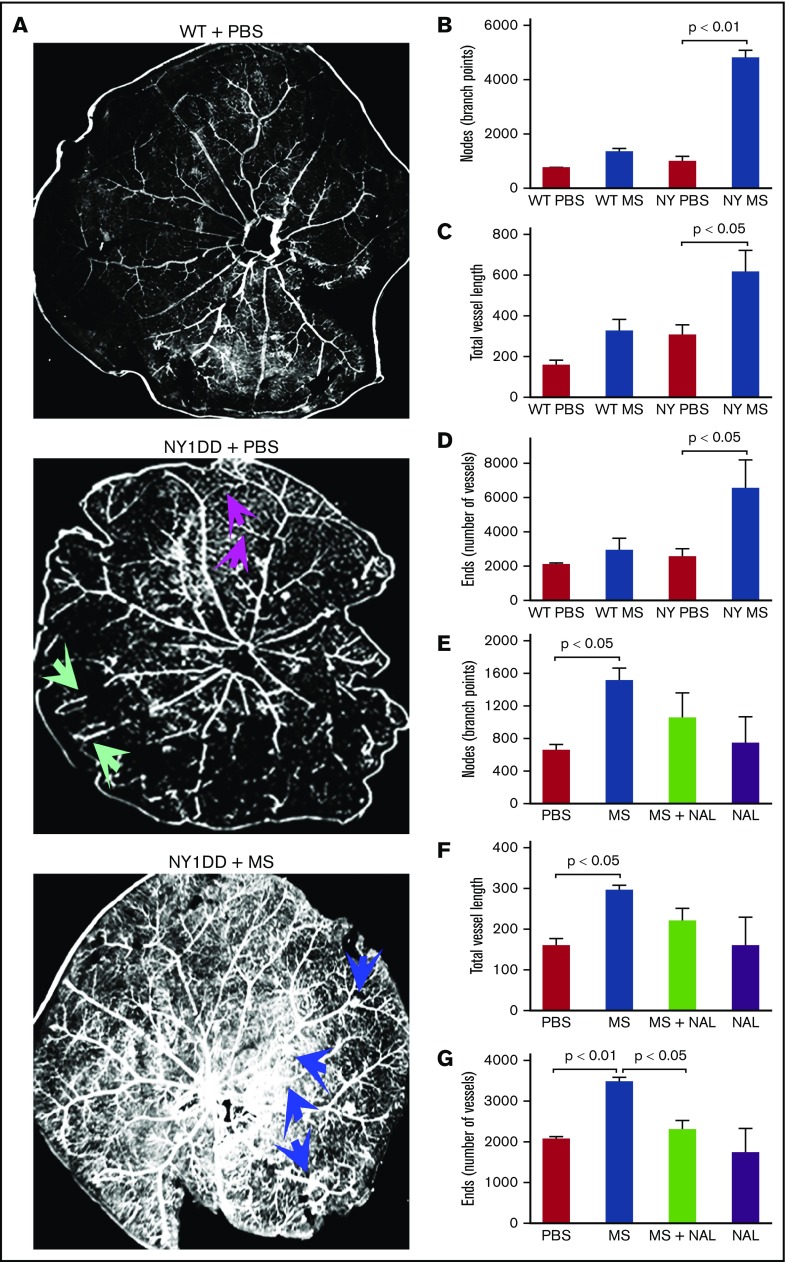Figure 1.
Morphine (MS) induces retinal neovascularization in sickle mice, which is attenuated by coadministration of opioid antagonist naloxone (NAL). (A-D) C57BL/6 mice (WT) or NY1DD sickle mice treated with phosphate-buffered saline (PBS) or increasing doses of MS for 15 months. (E-G) NY1DD sickle mice treated with MS alone, MS with NAL, or PBS with saline or NAL for 10 months. (A) Representative images of isolated retinae with ADPase staining of blood vessels (magnification ×400). NY1DD sickle mice treated with PBS had typical hairpin loops in the periphery (green arrows) and few arteriovenous (AV) anastamoses (magenta arrows). MS-treated NY1DD sickle mice had more AV anastamoses (blue arrows). The results of statistical analysis of nodes showing vessel branching (B,E), total length of blood vessels (C,F), and total number of blood vessels in retinae are shown (D,G). N = 3 mice per treatment. All values are mean ± SEM, and significance was determined by 1-way analysis of variance, Dunnet’s multiple comparisons.

